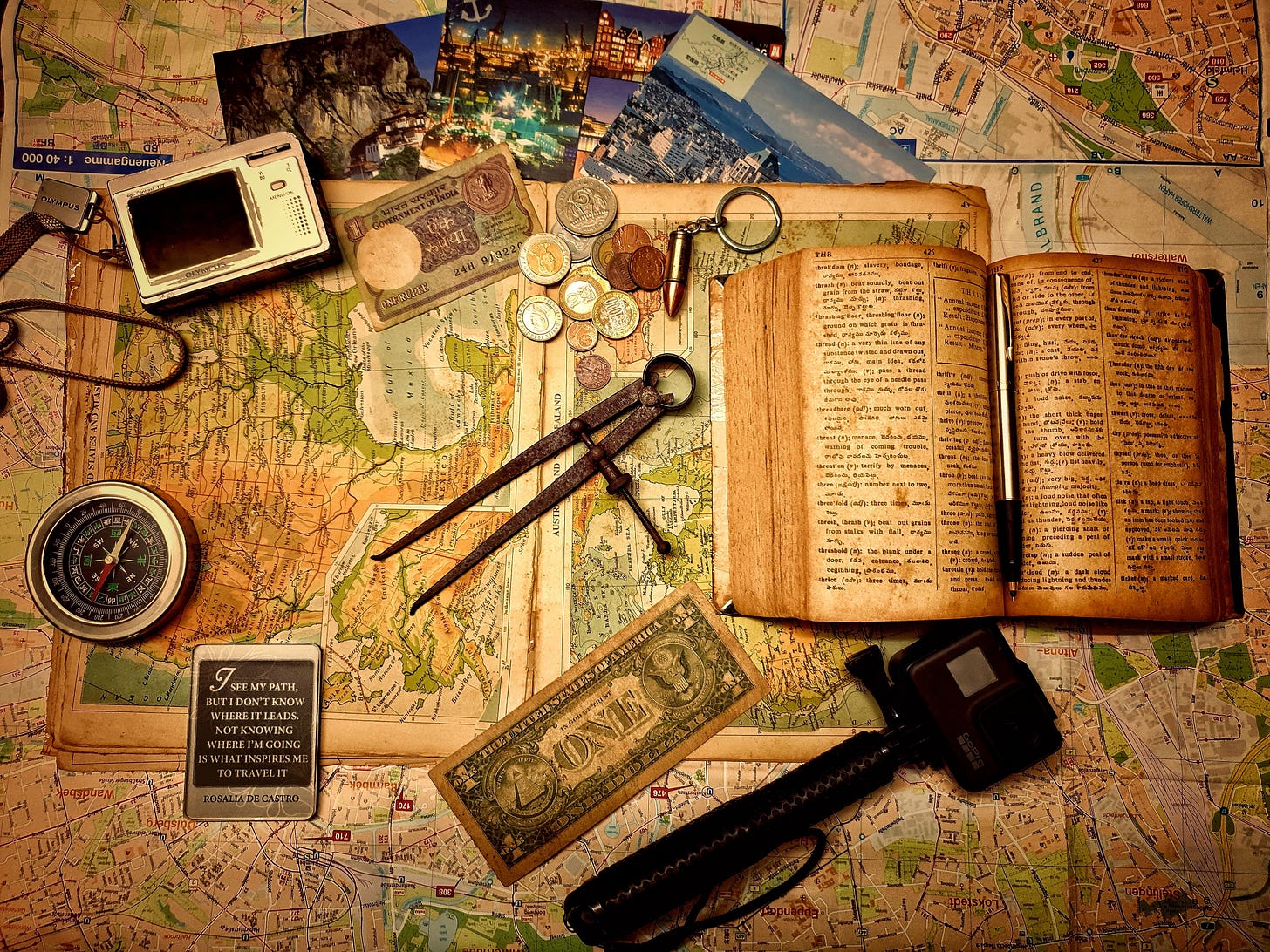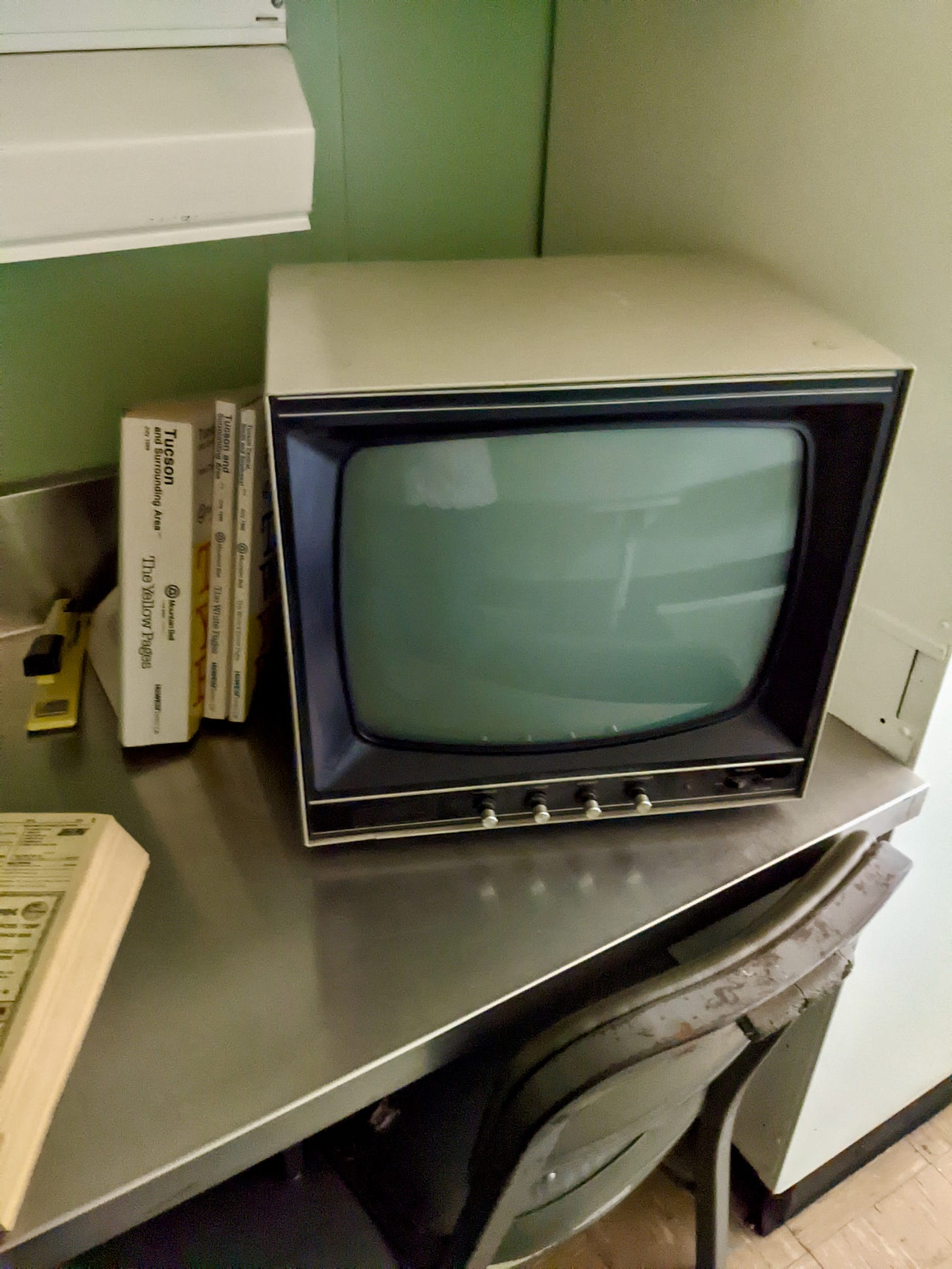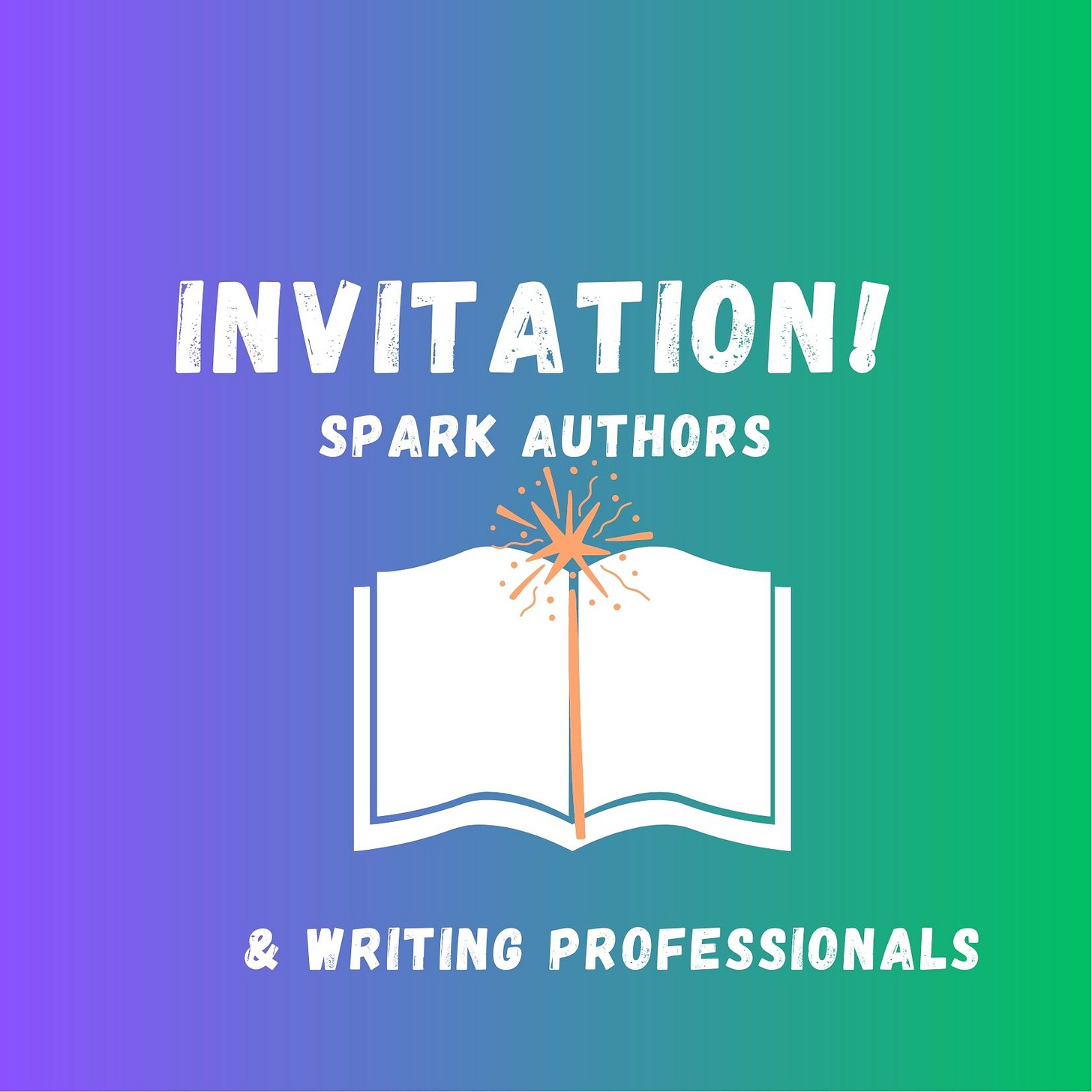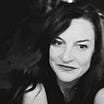The centerline of this particular weekend was survival
An excerpt from Courtney Cook's book-in-progress

Before we begin
Some people view maps as the products of irrefutable authority — something to blame when the wrong turn inevitably happens. Others pore over them, dream over them. Still others disregard them entirely and find their way by other means. What is your relationship with maps? Have you ever considered what goes into making these living documents? Has the digitization of maps and navigation taken something away from the more tangible folded, colored, veined document we clutch with varying degrees of faith?
Welcome! You’ve reached Spark. Learn more here or just read on. If you received this from a friend, please join us by subscribing. It’s free! All you have to do is press the button below. If you have already subscribed, welcome back! BTW, if this email looks truncated in your inbox, just click through now so you can read it all in one go.
Thanks for reading Spark! Subscribe for free to receive new posts and support my work.
A peek into the early stages of a book in development
Before a book is published comes an experience, a realization, an epiphany, or just a feeling. An idea begins to buzz like a persistent fly in the ear of the writer. Then comes the attempt to capture the thoughts that flood in. Eventually, there are chapters, proposals until, finally, a book. This week, we have an opportunity to enjoy a beautiful piece of writing that is part of an upcoming limited series and book project by
, one of the early subscribers to Spark and the publisher of Survival By Book.Here’s how she describes the genesis of this project with the working title, My Year With the Mapmakers:
Last year as part of my work for a mapmaking company, I traveled throughout the United States and to several European countries, meeting with people of many different nationalities. Over months of work collaborations and off-site conversations, these new friends introduced me to the geospatial technology behind things like urban planning, fleet logistics, and sustainability. For maybe the first time in my life, I began to see the artistry of science.
This book is the story of this year-long journey, taken post marriage and from an empty nest, but with a keen appetite for what’s new and what’s next. It doesn’t have a formal title yet, but I think of it as “my year with the mapmakers.”
The essay that follows, first published in April 2022 in a longer form, captures Courtney’s ability to weave information, observation, and the personal that evokes the desire to know more - about maps, map making, and the woman writing these words. Her bio appears at the end of the essay. I’ll join you in the comments section! - Betsy
The centerline of this particular weekend was survival
When you travel west from New England, there is always the matter of light. There is no diffused water here, no mists or cloud cover to buffer your eyes and skin; air is a conduit, not a barrier. Without humidity, the scent of objects—tires, fuel, dust, grass, denim, skin—can be differentiated. Shapeshifters abound: anthropomorphic cacti greenly point the way through acres of scrub; ordinary bushes flower and incandesce, casting bursts of fuchsia onto concrete overpasses; plateaus of rolling uplands circle the horizon like mountains and then reveal themselves as minor, wind-scraped buttes.
I was in Tucson, Arizona for the first of a series of international mapmaking conferences hosted by a community of volunteer map editors. It was my first in-person encounter with the people behind the world's largest peer-produced geospatial project, OpenStreetMap.
Both OpenStreetMap and my employer are players in the business of what we now call location services, but what used to be called cartography. In the old days, companies made maps by surveying landscapes with tools that could be held in your hands. Now, they collect billions of pieces of data from global navigation satellite systems (GNSS), cars, phones, traffic lights, and other sources, process it, and then visualize it into computer-generated simulacra of streets and buildings. To do this, companies use a top-down, hierarchical approach; they impose a highly detailed engineering ontology onto the topography of the known world.
In OpenStreet Map the mapmaking approach is intuitive rather than hierarchical. OSM is formed from the landscape it represents instead of an engineering model imposed on the landscape. The difference comes, in part, from the absence of a profit motive. OpenStreetMap is aligned with the principles of free and open source software, or FOSS, which means that anyone can edit OSM and its data is free for anyone to use. The result is that the map tends to be in the service of people instead of the other way around.
*
While I was out west, I went to two museums.
The first one was a deaccessioned Titan II missile site where, according to its website, visitors can “stand on the front lines of the Cold War.”
This was not my first thought for fun tourism. I grew up inside the center of a circle inscribed by three nuclear missile sites, one in Cheyenne, Wyoming, one in Minot, North Dakota, and one in Great Falls, Montana. I remember being on the playground in first grade, looking up at the sky, and being aware that my tiny mountain town was inside the kill zone of an attack on “Peacekeeper” ICBMs. But my friend wanted to go, and I am a curious person, so off to the bunker we went.
This place was an insane mix of vibes. There were fun toys and red, white, and blue bumper stickers and shot glasses and U.S. Navy-themed t-shirts for sale next to an exhibit describing the progression of the global nuclear arsenal since Nagasaki and Hiroshima. There was a cheerful girl who rang up our admission, an endearingly amateur safety video to watch, and an earnest tour guide who was ex-Navy and reminded me of my dad.
Inside the bunker, everything was painted a clean, minty shade of cold war green. Every so often, along the perimeter there was a human-sized, apparently spring-loaded coil. These coils, along with a kind of rubber casing at the intersection of most of the ceilings and walls were shock absorbing mechanisms. The whole setup reminded me of the housing for a 1980s era Ford F-150 gear shaft, only at bunker scale.
There was a perfectly preserved 1960s era command and control room with what was once some kind of mainframe computer, a launch clock, and a large, complex arrangement of keys, drawers, locks, measures, shelves and dials. There were neatly labeled filing cabinets, hazmat suits on hangers, and those old- timey power switches with big round buttons that are fun to push.
Everything was tidy, orderly, and slightly carceral.
In the vintage command room, the tour guide helpfully talked us through all of the checks and balances of a nuclear launch process, including sitting the small boy’s mom on one side of a desk and another guy on the other side and then coaching them through a simulation in which they pretended to launch the missile.
I kept myself back from the group a bit and watched my friend take it all in. I could see his mind working—some tiny percent of his cognition tuned in to the tableaux being played out in front of us, the rest of it expertly cataloging the machine function of the myriad levers and buttons, running the physics and computational science of sending a nuclear warhead across a continent and an ocean, and sorting what small amount of this was new to him into the galaxy of data already inside of his head.
I wondered if he saw the weirdness of having people playact the launch of a missile.
I wondered if anyone did.
I pictured the ashtray full to overflowing from cigarettes smoked after a shift. I pictured off-duty personnel, fucking on a narrow bunk, bare skin against rough wool, trying not to bump their heads on the bed above, careful not to be heard by their on-duty coworkers below—the ones sitting at desks next to launch keys and strips of mylar tape printed with nuclear passcodes.
I pictured the ashtray full to overflowing from cigarettes smoked after a shift. I pictured off-duty personnel, fucking on a narrow bunk, bare skin against rough wool, trying not to bump their heads on the bed above, careful not to be heard by their on-duty coworkers below—the ones sitting at desks next to launch keys and strips of mylar tape printed with nuclear passcodes.
In another room, there were viewing platforms that opened on the missile silo and the warhead itself, made of steel and glass and rivets and unfathomable physics. We looked at it from above and below, and it was awesome in the original sense of the word and strangely steampunk and weirdly beautiful.
The second museum that I visited was the Saguaro National Park, home to hundreds of towering Saguaro cacti amongst prickly pear, cholla, and a couple dozen other kinds of succulents. I went with all of my work colleagues—first fueling ourselves with breakfast burritos and cappuccinos, before driving into the desert.
We saw lizards and geckos and lined up with a group of other tourists along a pathway to watch raptors dive for prey and soar in the morning sunshine. The desert sun felt good on my skin, until it climbed a bit and changed from springlike to summer hot. One of my colleagues and I dropped out of the tour and found a place to sit in the shade. In the distance was the border of Mexico--hundreds of miles of land fading from plains into sky.
There had been a humanitarian mapping presentation at the conference the day before. It was by a mapmaking group called the Arizona OpenGIS Initiative for Diseased Migrants, who provide a service called “migrant death mapping,” which is what it sounds like: they locate the bodies of migrants who have died while crossing the border and note the time and place of death and identify the body—to the extent that these things are possible. It is deeply courageous and desperately sad work, part of a broader set of services provided by an organization called Humane Borders.
The ghosts of the missing were there with us as we sat in the shade amongst the flowering cacti and the shape-shifting colors of the desert spring.
Just this small bit of analytic geometry has changed how I see the shapes of the chartable world. Looking south across the forbidding beauty of Saguaro National Park, I thought about how boundaries are drawn and corrected in maps and how borders are drawn and disputed and defended, about the different things we do to restore meaning and direction when we feel lost, alone, or afraid.
My mapping colleagues talk all the time about centerlines. They are always producing them, or processing them, or importing them, or sharing them; centerlines are a kind of core currency in mapmaking. Centerlines are what give shape and directionality to the data from which roads are made and traffic routes are generated. Centerlines are also added to rivers to help make sure their banks are in the right place and to confirm the direction of the flow of the water. These are just two of many use cases.
It’s enough, though. Just this small bit of analytic geometry has changed how I see the shapes of the chartable world. Looking south across the forbidding beauty of Saguaro National Park, I thought about how boundaries are drawn and corrected in maps and how borders are drawn and disputed and defended, about the different things we do to restore meaning and direction when we feel lost, alone, or afraid.
The centerline of this particular weekend, I realized, was survival.
Survival is why we make maps and also missiles.
There was an orthogonal, too. It is the line of human connection that we stitch together from the bits and pieces of relationships that we form with fellow travelers.
Here are the wounds and vulnerabilities that we carry around as we try to survive the desert.
Here is the laughter and pleasure we have with our friends as we locate and relocate ourselves in airplanes and on highways, inside bunkers and under pavilions at museums, across high tables under twinkling string lights, around mezcal bars and conference halls, forming and reforming our human shapes inside of time and space and in defiance of the certainty of death.
About Courtney Cook
Courtney was born in Wyoming and has degrees from Dartmouth College and the University of Wollongong in New South Wales, Australia. She taught English literature at the Ethel Walker School, Phillips Exeter Academy, Rye Country Day, and Yeshiva University and directed communications and community outreach for Holderness School and within Dartmouth’s advancement division before leaving academia to work for the Dutch mapmaker, TomTom, where she led the company’s first OpenStreetMap community team.
She has written essays for the Los Angeles Review of Books, Salon and the Washington Post BookWorld. You can find her at Survival By Book.
Book recommendation
I really like how The Secret Language of Maps is about design and visual storytelling, but also about how we make sense of our lives in the material world.
Spark is Yours: Chime In
Hi there, this is Betsy again. Have you just finished a book you loved? Tell us about it. Got a great resource for readers or writers? Share away! How about sharing your book stack with us, that tower of tomes rising next to your bed or your bath or wherever you keep the books you intend to read – someday. And if you stumbled on a Moment of Zen, show us what moved you, made you laugh, or just created a sliver of light in an otherwise murky world.
Thank you and Welcome
Thank you to everyone who has shared Spark with a friend. Please keep it going! We are growing every week and it’s exciting.
Welcome to all new subscribers! Thank you so much for being here. If you would like to check out past issues, here’s a quick link to the archives. Be sure to check out our Resources for Readers and Writers too.
ICYMI: An invitation to authors and writing professionals in our community
We are lucky to have many published authors and writing professionals among us. Why not make a place where readers can find new books and writers can find help right here in the Spark community?
I’m excited to announce that we will be making a space here at Spark for the authors among us to introduce themselves and their books so the many readers among us can browse there for their next read. We will also make a space for the professionals among us who help writers with the craft and the business of writing – editors, writing consultants, readers, etc. – so those who need their help can find them more easily.
The good news is that even though we are assembling these resources from within and for the Spark community, readers who are not subscribers will be able to see it as well and you will be able to share it with anyone you wish.
The rules are simple:
Those listed must be Spark subscribers which is easy and free and brings lots of side benefits such as fun weekly discussions and essays about life and the books that help us get through it. If you later unsubscribe, no problem but your listing may be removed as we update.
If you are an author, you must have published at least one book - it can be old, new, e-book, audio, or print
The book(s) are still available through used/new bookstores, online, or in libraries
To add yourself to either of the lists, click the links below and fill out the simple forms. When we have at least ten folks listed, we’ll make the pages and keep updating them as new folks come in.
We already have some great writers and editors on our lists. I’m excited about this and look forward to seeing folks make new connections. I’m sure there will be glitches from time to time so I ask for your patience as we climb up the learning curve together. Please don’t hesitate to suggest improvements or to point out what’s not working. Thank you!
That’s it for this week. Let me know how you are and what you’re thinking about. And of course, always let me know what you’re reading. If there’s an idea, book, or question you’d like to see in an upcoming issue of Spark, let us know!
Remember, If you like what you see or it resonates with you, please share Spark with a friend and take a minute to click the heart ❤️ below - it helps more folks to find us!
Ciao for now!
Gratefully,
Betsy
P.S. And now, your moment of Zen…coming home
Calling for Your Contribution to A Moment of Zen
What is YOUR moment of Zen? Send me your photos, a video, a drawing, a song, a poem, or anything with a visual that moved you, thrilled you, calmed you. Or just cracked you up. This feature is wide open for your own personal interpretation.
Come on, go through your photos, your memories or just keep your eyes and ears to the ground and then share. Send your photos/links, etc. to me by replying to this email or simply by sending to: elizabethmarro@substack.com. The main guidelines are probably already obvious: don’t hurt anyone -- don’t send anything that violates the privacy of someone you love or even someone you hate, don’t send anything divisive, or aimed at disparaging others. Our Zen moments are to help us connect, to bond, to learn, to wonder, to share -- to escape the world for a little bit and return refreshed.
And remember,If you like what you see or it resonates with you, please share Spark with a friend and take a minute to click the heart ❤️ below - it helps more folks to find us!










